MARIANI’S
December
23, 2007
NEWSLETTER

Santa Claus by Norman Rockwell
Merry Christmas!
NEW! Click esquire.com
to go to my new biweekly column at Esquire
Magazine.
ARCHIVE: Readers may now access
an
Archive of all past newsletters--each annotated--dating back to July,
2003, by simply clicking on www.johnmariani.com/archive
SUBSCRIBE AND
UN-SUBSCRIBE: You may subscribe anyone you wish
to this newsletter--free of charge--by
clicking here.
In
This Issue
CHRISTMAS IN THE
By John Mariani
NEW YORK CORNER: Centro Vinoteca by John Mariani
NOTES FROM THE WINE CELLAR:The Best Bubblies for New Year’s Eve by John Mariani
~~~~~~~~~~~~~~~~~~~~~~~~~~~~~~~~~~~~~~~~~~~~
CHRISTMAS IN THE
By John Mariani
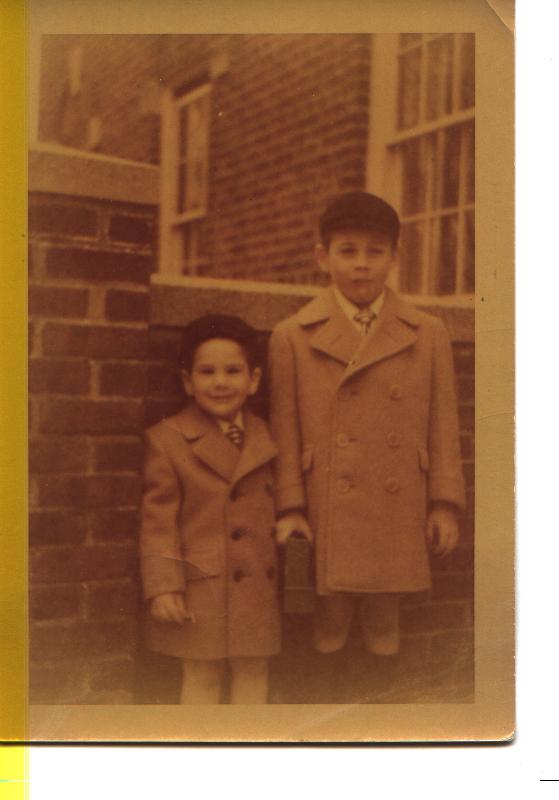 Maybe
it didn't snow for Christmas every year in the
Maybe
it didn't snow for Christmas every year in the But for all the decorations and the visits to stores and
The assumption that everything would be exactly the same as last year was as comforting as knowing that Christmas Day would follow Christmas Eve. The finest ancestral linens were ironed and smoothed into place, dishes of hard candy were set out on every table, and the kitchen ovens hissed and warmed our homes for days. The reappearance of the old dishes, the irresistible aromas, tastes and textures, even the seating of family members in the same spot at the table year after year anchored us to a time and a place that was already changing more rapidly than we could understand.
It's funny now to think that my memories of the food and the dinners are so much more intense than those of toys and games I received, but that seems true of most people. The exact taste of Christmas cookies, the sound of beef roasting in its pan, and the smell of evergreen mixed with the scent of cinnamon and cloves and lemon in hot cider were like holy incense in church, unforgettable, like the way you remember your parents' faces when they were young.
No one in our neighborhood was poor but few were rich. Yet we mounted feasts as lavish as any I could imagine in a book, and in the days preceding Christmas people took enormous joy in spending their money on foods only eaten during that season.
It was still a time when the vegetable man would sell his produce from an old truck on
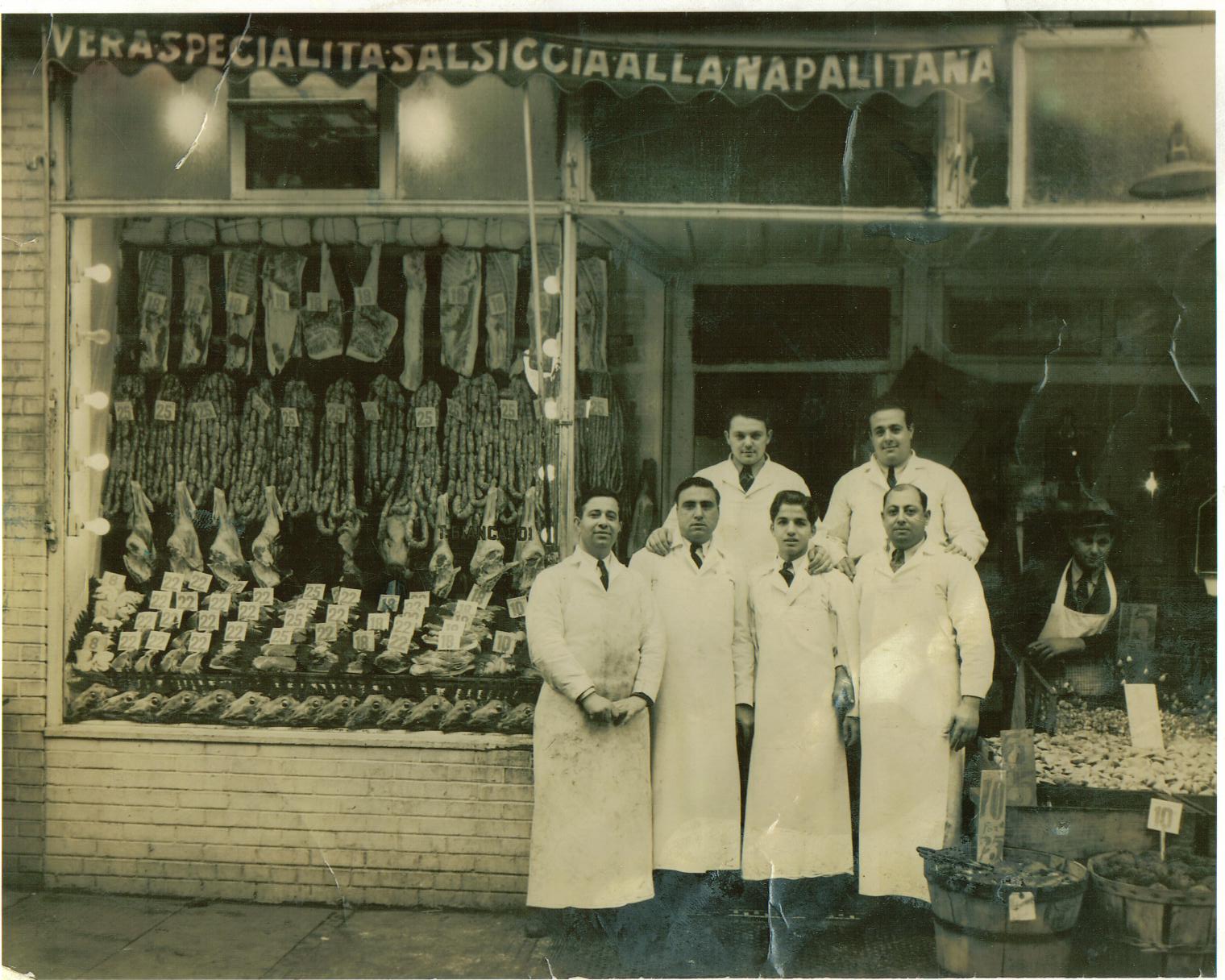
By Christmas Eve the stores ran out of everything, and pity the poor cook who delayed buying her chestnuts, ricotta cheese, or fresh yeast until it was too late. Weeks in advance the women would put in their order at the live poultry market for a female rabbit--not a male-- or a goose that had to weigh exactly twelve pounds.
Biancardi's Meats, The Bronx
You always knew what people were cooking for Christmas because the aromas hung in the hallways of the garden apartments and the foyers of their homes-- garlicky tomato sauces, roast turkeys, rich shellfish stews, and the sweet, warm smells of pastries and breads could make you dizzy with hunger. When you went out into the cold, those aromas would slip out the door and mingle with the biting sea-salted air and the fresh wet snow swept in off the Sound.
At the Italian homes in the
Few children would eat baccala, a strong-smelling salted cod cooked for hours in order to restore its leathery flesh to edibility, and stewed eel, an age-old symbol of renewal, was a delicacy favored mostly by the old-timers. But everyone waited for the dessert--the yeasty, egg bread called "panettone," shaped like a church dome and riddled with golden raisins and candied fruit.
Christmas Day came too early for everyone but the children, but as soon as presents were exchanged, my mother and grandmother would begin work on the lavish Christmas dinner to be served that afternoon. It was always a mix of regional Italian dishes and American novelties, like the incredibly rich, bourbon-laced egg nog my father insisted on serving before my grandmother's lasagna, in which were hidden dozens of meatballs the size of hazelnuts. Then my mother would set down a massive roast beef, brown and crackling on the outside, red as a poinsettia within, surrounded by sizzling roast potatoes and Yorkshire pudding glistening from the fat absorbed from the beef. Dessert reverted to venerable Italian tradition with my grandmother's prune-and-chocolate filled pastries and honeyed cookies called "struffoli."
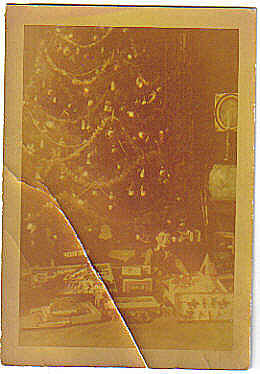 After
such a meal, we needed to go for a walk in the cold air. In other homes
up and
down our block people were feasting on Norwegian lutefisk, Swedish
meatballs,
German stollen, Irish plum pudding
and American gingerbread. If you stopped and listened for a moment, you
could
hear the families singing carols in their native tongue.
After
such a meal, we needed to go for a walk in the cold air. In other homes
up and
down our block people were feasting on Norwegian lutefisk, Swedish
meatballs,
German stollen, Irish plum pudding
and American gingerbread. If you stopped and listened for a moment, you
could
hear the families singing carols in their native tongue.By early evening people got ready to leave and leftovers were packed up to take home, belying everyone's protest that they wouldn't eat for days afterwards.
By then the snow had taken on an icy veneer and the wind died down to a whisper. I remember how the cold air magnified sounds far, far away, so as I crept into bed I could hear the waves lapping the sea wall and the rattling clack-clack, clack-clack of the El running from
This story is excerpted from Almost Golden by Robert and John Mariani (see below).
~~~~~~~~~~~~~~~~~~~~~~~~~~
NEW YORK CORNER
by John Mariani
CENTRO VINOTECA
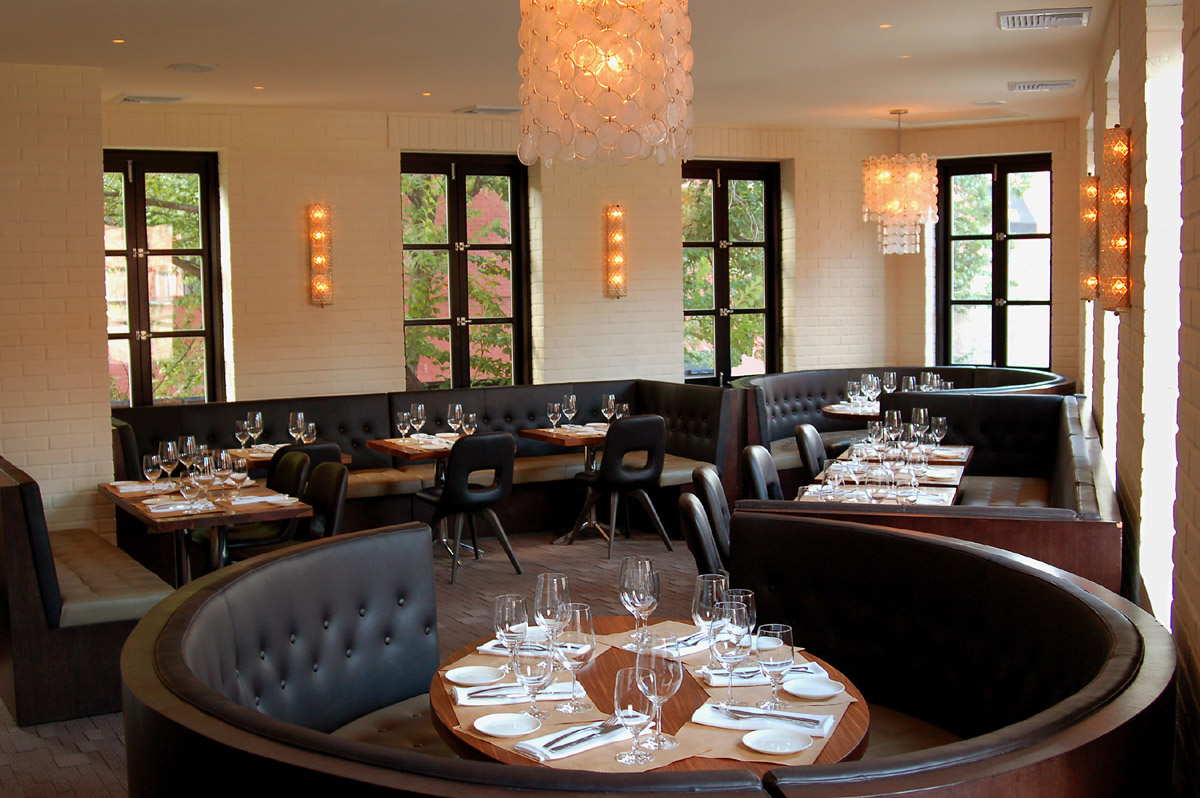
74 Seventh Avenue South
New York, NY 10014
www.centrovinoteca.com
Sasha and Alexei Muniak have already given Greenwich Village one of its most engaging trattorias, Gusto. Several months ago they added measurably to the local scene with the two-story Centro Vinoteca, whose chef Anne Burrell (below) had worked for years with Mario Batali as sous-chef on that "Iron Chef" show. Now she is showing her own chops, literally and figuratively, which share much of the lustiness of Batali's cooking.
Burrell's own claim to indulgence is her array of little bite-size morsels called piccolini that are so good they may ruin your appetite for all the good things to follow. And with about 20 wines available by the quartino, that's not a bad way to eat lightly. The winelist itself is about 200 labels strong, mostly Italian. And so you sit down to a card listing all the piccolini, which include a slew of fried foods like arancine rice balls with a dot of ham and cheese inside; Parmigiano-dusted cauliflower; and a terrific spread of mortadella sausage and Gorgonzolla-packed figs. There are also thin-crusted but nicely puffy little grilled pizzas--the one topped with with stracchino, hot sausage & arugula is outstanding.
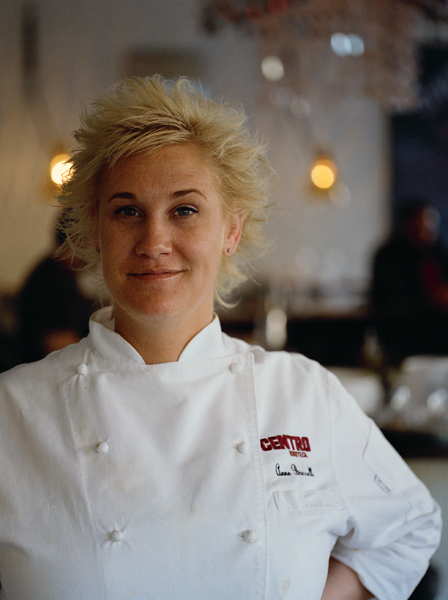 Then you start on the appetizers and
pastas! Well-crisped sweetbreads with Speck bacon, warm cabbage
salad, and a pickled mustard sauce; a mixed plate of Italian salamis
like culatello, finocchiona,
and cacciatorini; grilled seppioline
(cuttlefish) with roasted
acorn squash, dandelion greens,
apples and
pumpkin seeds; little pinches of pici pasta with
sweet-spicy sausage ragù;
a luscious raviolo al’uovo,
the egg oozing
forth from the pasta,
laved with sage butter sauce and guanciale
bacon (below); an assertively
lusty,
chile-sparked bucatini
all’amatriciana; and broccoli di rabe-Swiss chard ravioli with
pecorino
marjoram sauce and pistachios.
Then you start on the appetizers and
pastas! Well-crisped sweetbreads with Speck bacon, warm cabbage
salad, and a pickled mustard sauce; a mixed plate of Italian salamis
like culatello, finocchiona,
and cacciatorini; grilled seppioline
(cuttlefish) with roasted
acorn squash, dandelion greens,
apples and
pumpkin seeds; little pinches of pici pasta with
sweet-spicy sausage ragù;
a luscious raviolo al’uovo,
the egg oozing
forth from the pasta,
laved with sage butter sauce and guanciale
bacon (below); an assertively
lusty,
chile-sparked bucatini
all’amatriciana; and broccoli di rabe-Swiss chard ravioli with
pecorino
marjoram sauce and pistachios.Think you've got room for a main course? Then go right ahead with crispy skate in “acquapazza” (crazy water) with bay scallops, calamari and rock shrimp, fregola and raw fennel salad; or brined pork chop crusted with fennel pollen, pancetta, swiss chard, baby turnips and crispy bacon skin; or a ribeye tagliata with potato-prosciutto fontina cake and broccoli di rabe.
Force yourself onward to desserts like goat's cheesecake with roasted figs or a cappuccino panna cotta with chocolate cinnamon shortbread and chocolate covered espresso beans. Or maybe just a plate of crunchy tarallucci cookies you dip into silky, salted caramel. Don't bother with the out-of-character green apple and crystallized ginger prosecco “float.”
This is true trattoria fare of a kind you get in highly personalized regional examples throughout Emilia-Romagna, Abruzzo, and particularly in Rome and Naples, and Ms. Burrell must be commended for being so devoted to making her food with both care and obvious passion.
The winelist at Centro Vinoteca, as befits its name,is very carfeully crafted to reflect the regional nature of small estates in Italy, with a good selection of proseccos and especially red wines that go so well with this food, with many bottles well under $40.
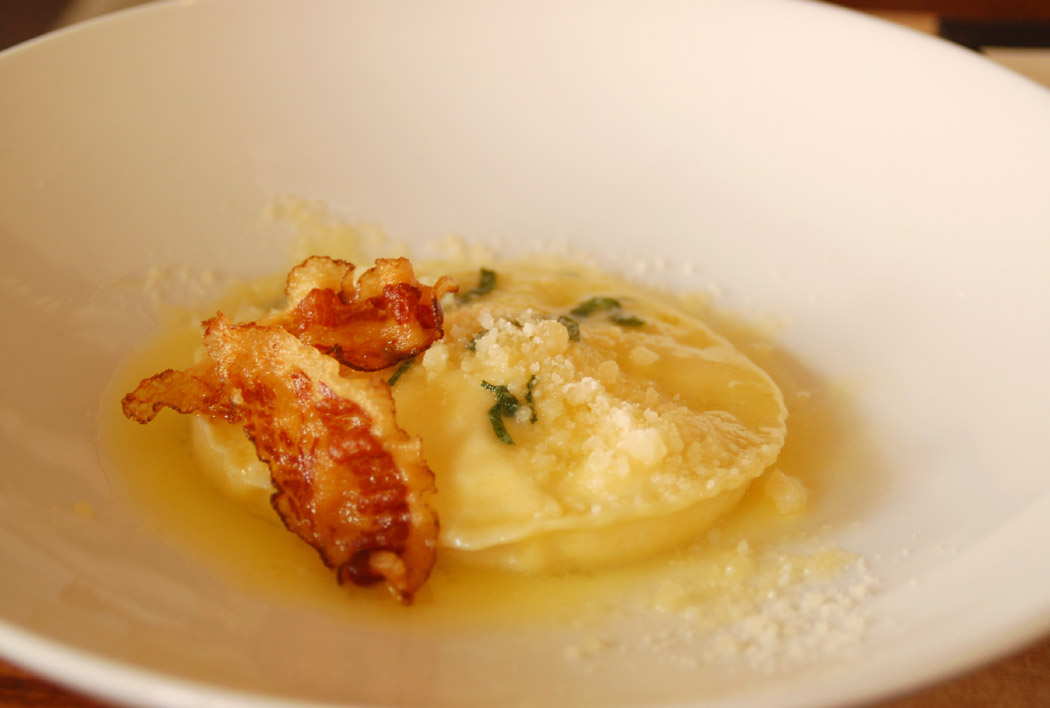
But now, a few discouraging words: Centro Vinoteca is a two-story restaurant--downstairs 40 seats, upstairs 32--a semi-open kitchen, and a noise level that would wake the dead--still another example of restaurateurs who somehow believe their clientele (make that "a young crowd") truly loves not to be able to hold a conversation without a shouting match, assured by the playing of pounding music whose only discrenible notes are the bass and drums. There are no tablecloths, so that adds to the noise. Downstairs, as more than one of my reviewing colleagues has mentioned, the sound level is unbearable; upstairs (above) it is pretty good, until about nine PM when they start pumping in that odious music. I always ask the waitstaff if they get complaints about the noise (they always do) and if anyone has ever asked it to be louder (none does), so I am baffled as to why restaurateurs as canny as the Muniaks want to drive a good percentage of customers away from their restaurant because they can't stand the noise.
Such is easily remedied, starting with turning down, or off, the music. People create their own gregarious sound, and that's the way a true trattoria should be. Next time I go to Centro Vinoteca I will either bring noise-lessening earphones or eat outside on the sidewalk.
By the way, just this week Sasha Muniak announced that the brilliant chef Amanda Freitag has left Gusto to become chef at The Harrison in TriBeCa and that Burrell will take over double duties at both Gusto and Centro Vinoteca, with a re-design of the former in the near future. Let's hope soundproofing is part of the new design.
NOTES FROM THE WINE CELLAR
The Best Bubblies for New Year’s Eve
by John
Mariani
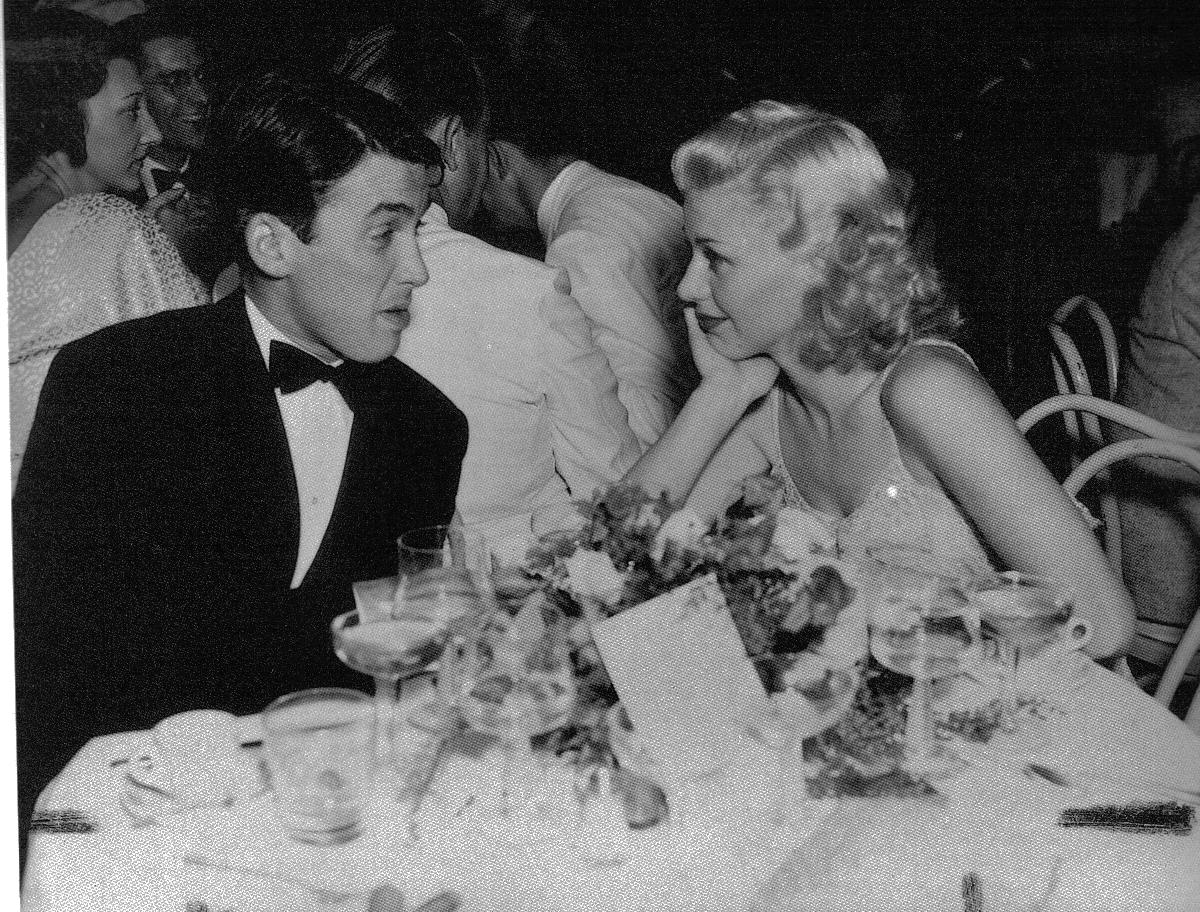 I
sometimes
wonder how much
expensive
I
sometimes
wonder how much
expensive Given the prices of even entry level Champagnes these days--$40 or more—I don’t want to waste a drop, so I am very careful about opening and pouring the bubbly and choose my friends carefully at New Year’s.
James Stewart and Ginger Rogers at El Trocadero, Hollywood,.circa 1940.
For a dinner party of half a dozen wineloving guests I will happily break out my very favorite
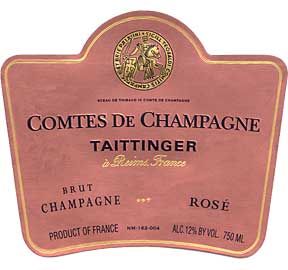
If my party is larger and I still wanted to serve a fine Champagne that won’t cost a fortune, I’d go with Piper-Heidsieck “Rare” ’90, a delicious older vintage still available for less than $80. It is typical of the house style, ripe with fruit and that slight patina of age that I like in an older vintage. And I will be sure to remind my guests that Marilyn Monroe used to say that a glass of Piper each morning warmed the body.
I suppose there is a small sense of shame some people have who believe
I could serve them a vin mousseux—a French sparkling wine not from the
Spain produces a great deal of sparkling wine, called cavas, made in the Champagne method, the best coming from the region around Saint Sadurni d’Anoia in the Penédes, and the names to look for are Codorniu and Freixenet, which consistently make delicious cavas for under $10 a bottle.
 I am carefully
chauvinistic about the best California bubblies—a small group, to be
sure—but I
particularly like Schramsberg’s Blanc de
Blancs (the 2004 vintage is now in the market for about $25) and
the
excellent Domaine-Chandon Brut ($15), whose Napa Valley estate is owned
by the
Champagne producer Moët-Chandon.
I am carefully
chauvinistic about the best California bubblies—a small group, to be
sure—but I
particularly like Schramsberg’s Blanc de
Blancs (the 2004 vintage is now in the market for about $25) and
the
excellent Domaine-Chandon Brut ($15), whose Napa Valley estate is owned
by the
Champagne producer Moët-Chandon.But another part of my bloodline sides with Italy’s prosecco, which is assuredly not a sparkler on the level of a Champagne but, with its low alcohol, lemony citrus flavor, and low price, is something I could drink with friends as an aperitif (it’s the basis of the bellini cocktail), with antipasti, shellfish, or any seafood for that matter. And at $15-$30 a bottle, you need not wait until New Year’s to enjoy it. Zardetto’s Zeta label ($18) has bright fizziness and a little more alcohol at 11.5 percent, so the structure and fruit are there in abundance.
I can’t say I would stoop to serving a German Sekt, which is rarely exported anyway, for I feel pretty much the way the Iron Chancellor Otto von Bismarck (left) did when he chose

Chef Marc Sanders of The Wild Boar Hotel in Yorkshire, England, has begun serving canapés of gray squirrel pancakes to guests. The squirrels were caught on the 72-acre hotel hotel property and, according to general manager, “tasted rather nice, a bit like rabbit.”
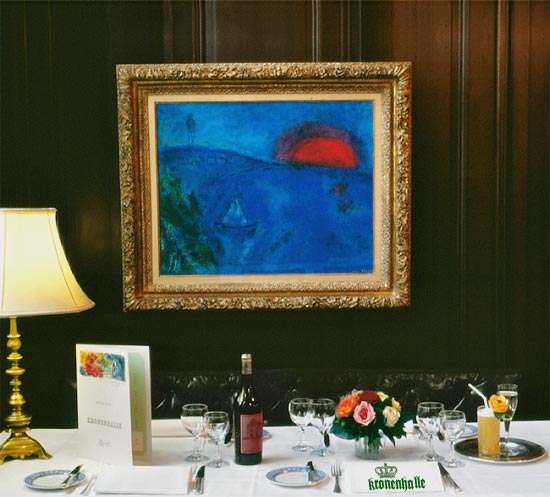
Somehow We Doubt It
“Ask almost any world-traveled industry mogul or culinary maven their favorite place to break bread, free of pretentiousness or self-conscious quirkiness—it’s highly likely Zurich’s Kronenhalle will lead the pack.”—Stefania Yarhi, “The Perfect Restaurant,” Style Magazine (Winter 2008).
QUICK BYTES
Everett Potter's Travel Report:
Tennis Resorts Online: A Critical Guide to the World's Best Tennis Resorts and Tennis Camps, published by ROGER COX, who has spent more than two decades writing about tennis travel, including a 17-year stretch for Tennis magazine. He has also written for Arthur Frommer's Budget Travel, New York Magazine, Travel & Leisure, Esquire, Money, USTA Magazine, Men's Journal, and The Robb Report. He has authored two books-The World's Best Tennis Vacations (Stephen Greene Press/Viking Penguin, 1990) and The Best Places to Stay in the Rockies (Houghton Mifflin, 1992 & 1994), and the Melbourne (Australia) chapter to the Wall Street Journal Business Guide to Cities of the Pacific Rim (Fodor's Travel Guides, 1991). Click on the logo below to go to the site.
~~~~~~~~~~~~~~~~~~~~~~~~~~~~~~~~~~~~~~~~~~~~~~~~~~~~~~~~~~~~~~~~~~~~~~~~~
MARIANI'S VIRTUAL GOURMET NEWSLETTER is published weekly. Editor/Publisher:
John Mariani. Contributing Writers: Robert Mariani, Naomi
Kooker, Kirsten Skogerson, Edward Brivio, Mort
Hochstein, Suzanne Wright. Contributing
Photographers: Galina Stepanoff-Dargery, Bobby Pirillo. Technical
Advisor: Gerry McLoughlin.
Any of John Mariani's books below
may be ordered from amazon.com by clicking on the cover image.
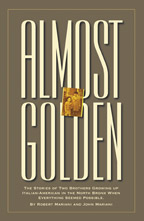 My
newest book, written with my brother Robert Mariani, is a memoir of our
years growing up in the My
newest book, written with my brother Robert Mariani, is a memoir of our
years growing up in the For those of you who don't think of the Robert and I think you'll enjoy this very personal look at our --John Mariani |
 |
 |
 |
 |
 |
 |
copyright John Mariani 2007

